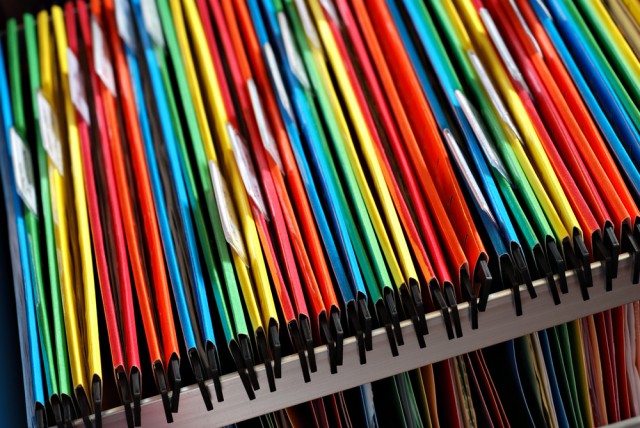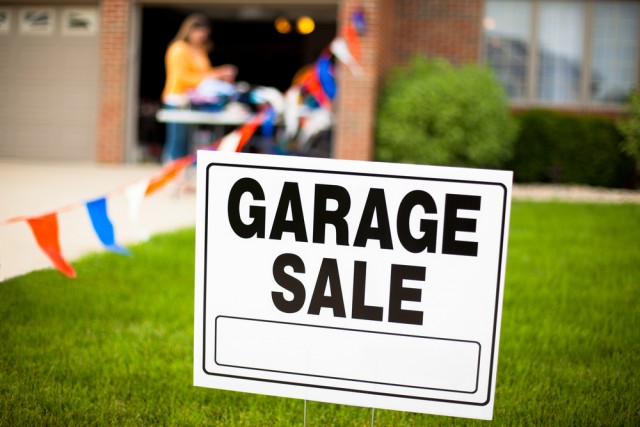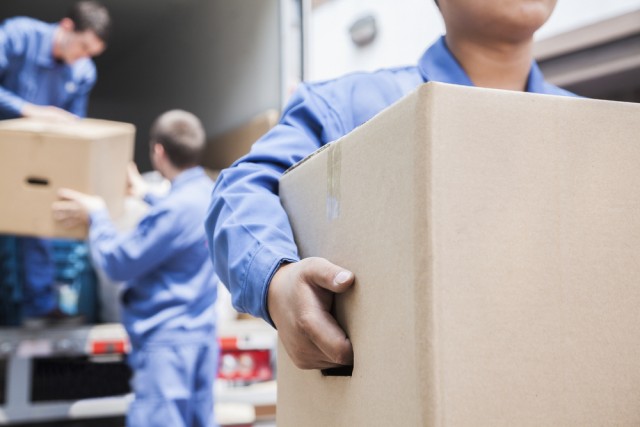By Logan Livers, Vince Mancuso, and Patrick Galvan | Storage.com
Storage.com is your number one ally when moving to a new home. We’re here to provide you with useful moving tips and hacks, or additional storage whenever necessary.
Whether you are between apartments or have recently moved into a new home, people agree that moving can be one of the most stressful times in your life. Outside of the time used to pack, haul, and unpack your belongings, you will also have to update anything that has your old address information and may even have to transfer sensitive information to new facilities such as medical, financial, and school records.
Knowing how to plan your move can simplify the process, and Storage.com is here to help with a free printable moving checklist. This moving checklist starts eight weeks out, with week-by-week steps, notes, and tips on what you need to get done.
Click the button below to download the free moving checklist, and read below for additional moving tips.
Download Our Free Moving Checklist!
8 WEEKS BEFORE YOU MOVE – START PLANNING YOUR MOVE

This week of your moving checklist is all about planning and preparing for your move. At this stage, it is important to ensure that everything regarding your new home is scheduled and all of the legal documents have been signed. To make this process easier and more organized, create a file for all of your moving-related documents so everything will be in one place.
- Ensure all plans and paperwork for your new home are completed, signed, and secure
Plans should include having your new house or apartment secured. This means any apartment leases should be signed, making sure your home loan has gone through, and any other paperwork has been completed.
- Determine whether you will move yourself or use professional movers
Moving on your own has the benefits of saving you money, and it can be done easily if moving across town into a different neighborhood. The benefit to professional movers, however, is expertise and equipment designed for moving heavy and costly items.
- Research and request estimates from moving companies
Use review websites such as Yelp or even Google Reviews to see what past customers have experienced.
- Create a budget for moving, which should include cost of moving supplies, transportation, and potentially professional help in relocating
Moving budgets should include expenses such as moving supplies, shipping, and personal transportation.
- Create a digital or hard file to track important moving documents such as receipts and important medical, dental, school, and financial records
Keep a digital or hard file in a secure, easy-to-remember location as it will later include important medical, dental, educational, and financial records.
7 WEEKS BEFORE YOU MOVE – GATHER IMPORTANT DOCUMENTS


While week 8 was about planning and preparation, week 7 of your moving checklist will mostly involve your moving file and collecting the information you’ll need while relocating.
- If applicable, begin requesting and collecting medical, dental, prescription, and veterinary records
If relocating out of state, you’ll need to begin collecting medical information. HIPAA gives everyone the right to copies of his or her medical records, but it can still be a lengthy process, as the law allows up to 30 days for the healthcare provide to deliver the copies. There is also an allowance of a 30-day extension, though the provider must give a reason for the delay.
Requesting medical records will also require filling out an authorization form and you may need to show a government-issued ID. Most non-critical care records should be received within 5-10 business days.
- Compile copies of financial and legal records
Like medical records, this can also take some time, which is why it’s important to begin collecting documents more than a month ahead of your move.
- Request school records to be transferred
If you’re moving into a new school district and have school-aged children, contact both your current and new schools about the move, and begin having educational records transferred to the appropriate parties.
- Cancel or transfer gym or health club memberships
Most gyms and health clubs require a 30-day notice of discontinuing services. Waiting too long to notify your gym of a cancellation could result in being charged for an additional month of membership that will be left unused.
- Contact insurance agent to see if adjustments need to be made for a new policy
As you’re moving into a new home, there will be changes in your insurance policy. Starting the work early prevents stress from doing too much at once, which can result in important information and changes being forgotten or overlooked.
6 WEEKS BEFORE YOU MOVE – DECIDE WHAT STAYS AND WHAT GOES


Now that you have some of the initial planning and document retrieval out of the way, you can now focus on things within your home. Week 6 of your printable moving checklist focuses on organizing the items you plan to move as well as purging your home of items you no longer use, need, or want.
- Determine whether to ship or personally transport costly and personally valuable items
Many of the items you’ll be relocating during the move will have either a high financial or personal cost if broken or lost. Shipping services can often provide a secure and professional assurance that items will be relocated safely. However, there are some items, such as family heirlooms, that you may want to move yourself.
- Begin taking inventory of all your items and separate into nonessential, essential, and unneeded/unwanted items
Nonessential items are typically items such as seasonal clothing, decorations, or even tools and equipment that you will not need in the weeks leading up to your move. Essential items are belongings that you do and will use on a regular basis, such as eating utensils and cookware. Unneeded and unwanted items are often broken items, but can also be things you just don’t use anymore or have outgrown, such as old but still usable clothing.
- Discard broken, irreparable, or other unwanted items
Moving can be a great opportunity to clean out your home of unusable and unwanted belongings. Discard these items as soon as you can to avoid second-guessing and moving the clutter to your new home.
- Begin planning garage sale
A garage sale can be a great way to clear out the unwanted items you have that are still usable while also getting some compensation back.
- Begin consuming perishables and using other products that cannot be moved or shipped
As far as food goes, go for the items that have a short shelf life first such as fruits and dairy, and avoid stocking up on these items in the next few weeks. Other products that cannot be shipped include flammables such as lighter fluid, poisons found in bug sprays, and aerosol cleaning products.
5 WEEKS BEFORE YOU MOVE – BEGIN PACKING SELDOM-USED BELONGINGS


With your belongings separated into essential and nonessential categories, it is time to start packing! Your fifth week will consist of gathering moving supplies, packing your items, and making important arrangements for the move.
- Purchase or collect moving supplies
You can purchase cardboard boxes, packing peanuts, and tape at most local retailers. Supermarkets sometimes have leftover boxes, which they will give you for free because they otherwise have to pay to recycle. You can also use crumpled up newspaper to help cushion items you will be packing.
- Begin packing, starting with nonessential items and clearly label boxes, including what room it will be placed in once moved such as bedroom, kitchen, or living room
Since your nonessential items, such as seasonal clothing, are used less often, pack them first. If possible, pack related belongings together and be sure to label all of your boxes. This will make the process of unpacking and moving in easier in the long run and you won’t have to later wonder, “Where did I pack that?”
- File a change of address with the US Postal Service or request them to hold mail at the post office that serves your new neighborhood
While you still have a few weeks to go, notify the U.S. Postal Service that you’ll be changing your address so that your mail no longer gets sent to your current home. It would be a major inconvenience to have any important mail or credit cards information shipped to your old address once you have left. If you want, you could also request them to hold your incoming mail at the post office in the city you’re moving to.
4 WEEKS BEFORE YOU MOVE – NOTIFY UTILITIES AND MAKE MOVING RESERVATIONS


At the end of week five, you will began notifying your current service providers of your upcoming change of address and request a transfer of service. In this next week, you will also inform other service providers, including those who will assist you with the move.
- Notify utility services at your current and new locations of relocation.
Since you notified the postal service last week of your change of address, it is now time to inform the organizations providing your basic utility needs.
Utility services you should contact include:
- Electric
- Water
- Gas
- Cellular/Telephone
- Cable/Satellite
- Internet
- Sewer
- Waste Management
- Make a reservation for a moving truck or professional movers
Changing homes can be an extremely strenuous process, and you won’t want to go it alone. You’ll need someone to help you transport everything you own so that you don’t have to regularly travel back and forth between homes on moving day. If you intend to pay a moving company to help you, now is the time to make a reservation with them. It is important to remember that they operate according to a schedule, so the further in advance you reserve with them, the more likely it is they’ll be able to match their schedule with yours.
- If self-moving, notify family, friends, and other help of moving date
Recruiting family and friends to help with the move will prove less expensive than hiring professional movers, but you should still notify them long in advance to make sure they are available to help.
- Have a garage sale for items in the unneeded/unwanted categories
Now is the time to clear out any of the unneeded and unwanted items before your big move. Holding a garage sale for these types of items can also help put some money back in your pocket.
- If applicable, determine or make travel arrangements for pets.
If you have any pets, make arrangements for them to be safely transported to your new home. Ideally, of course, you’ll want them to travel on the same day as you.
3 WEEKS BEFORE YOU MOVE – GET REID OF ITEM’S YOU’RE NOT MOVING


In week three, your primary goal will be properly disposing of the unneeded or unusable items you could not sell in the previous week’s garage sale. This week will also include preparations to ensure a smooth moving trip.
- Dispose of unused flammables, corrosives, poisons, and other items that cannot be shipped, except for food.
Locate a company that will safely dispose of any flammables, corrosives, poisons–basically anything you cannot safely ship to your new location. It is better to replace these items at your new residence.
- Donate or discard any unsold items from garage sale
Now it is time to get rid of everything you couldn’t sell last week. While many people choose to throw away anything they do not want to keep, you could always donate your belongings to Goodwill or some other community-serving organization.
- Have your vehicles serviced
You do not want to experience any car trouble while traveling to your new residence, so make it a point to have your vehicles serviced this week. It is important to have your oil, air filter, washer fluid and tires checked to ensure that everything is in working order before you head out.
2 WEEKS BEFORE YOU MOVE – NOTIFY SERVICES OF YOUR MOVE


At this point in the moving process, it is time to notify services that will be affected by your change of address.
- Begin notifying the following services of the move:
- Financial and Legal Services:
- Accountant
- Attorney
- Bank/Credit Union
- Credit Card Companies
- Car Insurance Provider
- Car Loan Provider
- Financial Planner
- Medical Services:
- Doctor
- Dentist
- Veterinarian
- Health Insurance Provider
- Pharmacy
- Memberships and Subscriptions:
- Magazine Subscriptions
- Newspaper
- Video Streaming such as Netflix, if you are subscribed to the mailing service
- Government Offices:
- Social Security Administration
- IRS
- Veterans Administration
- If applicable, reserve self storage unit move-in date
Moving can be a complicated matter. It might take several days for you to finish unloading and unpacking, and you might end up wanting to save space by moving some extra belongings into a self storage unit. Most self storage facilities prefer to schedule move-ins within a window of two weeks, so now is an ideal time to make a reservation! The staff can help you calculate the size and number of storage units you will need and will reserve the right one for your specified move-in date.
- Confirm travel arrangements for family and pets
Since the big day of the move is approaching, confirm travel arrangements for your pets. Because your pets need attention and care, ensuring the time and safety of their transportation is an absolute must.
- Confirm moving date with movers, friends, family, or other help
Confirm travel arrangements for your belongings with the moving company, friends, family, or whomever will be assisting you with the move.
- Create meal plan for next two weeks, aiming to consume all perishable foods in current home
For the next few weeks, you’re going to have your hands full with unpacking and situating yourself in your new home, so take this time in advance to formulate a meal plan. Create a plan which covers the next two weeks and includes all perishable foods that you won’t be taking with you.
- Assemble a file of important information about current home for the next owner
It may be sad saying goodbye to your home, but you should now take the time to collect all important documents and information about your home so that it will be available for the next owner.
1 WEEK BEFORE YOU MOVE – MAKE FINAL PREPARATIONS


By this point you should be well-prepared to make your move. This final week before moving day is all about making the final preparations and ensuring that you have everything ready to go.
- Review your moving plans
Take the time to review your moving checklist and make sure that everything applicable to your situation was completed or scheduled. If you missed something, take care of it right away.
- Give your new address to friends and family
Make sure all of your loved ones will know your new address so they can send you mail or drop by for a visit once you are settled in.
- Pack remaining essential items
During this week you will still need to pack up everything that you needed to get through the week. Things like current clothes, select toiletries, and other items can be boxed up once you’re done with them for the week.
- Pack personal essentials in a box to keep nearby during move
Make sure you keep a few items in an easily accessible box during the moving process. You don’t want to have to dig to the back of a moving van to find a toothbrush!
- Fill any prescriptions needed during the move
If you have any prescriptions, you’ll want to make sure they are filled before you begin moving so you don’t have to worry about it in the middle of your move.
- Drain gas, oil, and other fluids from lawn care equipment, grills, heaters, etc.
The best way to drain gas is to run these items until they run out. Be sure to use appropriate containers when draining oil.
- Drain water from hoses
If applicable, be sure to drain all water from your hoses this week and give them plenty of time to dry out.
- Take measurements of doorways and furniture to insure furniture can fit through
Sometimes you can’t remember if you moved a piece of furniture into your home in one piece or if you assembled it in the living room. Take the time to measure doorways and furniture to see what will fit and what will need to be disassembled.
- Empty the refrigerator of any food products and defrost at least 24 hours before moving
Hopefully you haven’t purchased too many groceries leading up to this week, because this is the time to either eat it or toss it. If you need help eating the food, invite over some friends for a small going away party and enjoy a smorgasbord of food.
- Deep clean your living space
If you are moving from an apartment, deep cleaning your entire apartment will give you a better shot at getting your damage deposit back. If you are moving from a house, cleaning your living space is an expected courtesy.
MOVING DAY


The day has finally arrived!
- Be present to supervise moving
If you’re using a moving company, take time out of your day to be there to supervise the move. They’re the experts, so you’ll have to let them do their thing, but being in attendance helps make sure that you know what is going on.
- Place and use carpet, floor, and door frame protectors throughout home
Protect your old home from scratches and dings during the moving process so you don’t have to spend additional time and money making repairs.
- Load items in truck in pre-determined order, preferably grouped by what room the items will go in at new home.
With all of your boxes clearly labeled, this should be a simple process that will help everything go smoothly from start to finish.
- Give every room and closet a last look over to ensure nothing is left behind
Start at one end of your home and methodically move throughout every room to check for anything you may have accidentally left behind. If necessary, call moving company to have shipments picked up.
- Leave new owners a note with new address to forward any stray mail
The USPS also allows you to set up a forwarding address online, so this step can be taken care of fairly easily.
MOVING IN


You’re not done yet! You still have to move everything in and get unpacked before your new home really starts to feel like a home.
- Unload items directly into room they are labeled for, such as bedroom, kitchen or living room
This is why labeling is important. This process should be super easy if everything is appropriately labeled. Be sure to stack boxes out of the way so you can keep unloading easily.
- Check over items for any move-related damages
This is especially important if you used a moving company. Notify them right away if they damaged something during the move.
- Pick up any mail being held at new local post office
If you think you may have received some mail already, you can check your new post office to pick it up in person.
- Begin organizing your new home
Start with organizing items in shared spaces, like the kitchen, living room, and bathrooms, and then move on to organizing the bedrooms.
- Order pizza to celebrate a successful move
This is also universally accepted currency for paying family and friends that helped you with the move.
AFTER THE MOVE


Once everything has been moved and put into place, there are still a few steps remaining to help you get fully situated.
- Compile all moving-related receipts and documents and place in move file to store in an easy-to-remember location in your new home
By keeping all of this information in one spot, you will be able to easily track your expenditures so you know how much the entire move cost.
- Update your driver’s license and vehicle tags
You’ll want to take care of this as soon as possible since you are encouraged to get it done 30 days after you move. Be sure to bring two forms of your new address. In many states, it can take a couple of weeks to receive a new driver’s license.
- Meet your neighbors
Make a good first impression by dropping off a gift to your new neighbors, like some homemade treats.
A STORAGE UNIT NEAR YOU IS WAITING TO
HELP WITH YOUR MOVE.





